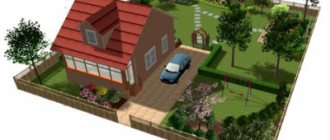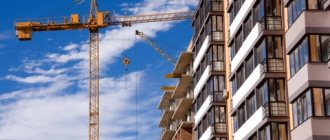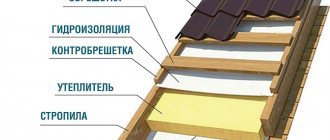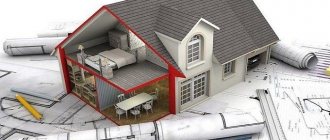- 4.4.2018
- 16400
A cool cottage community and an old Soviet garden are legally considered objects of equal order by government agencies (Rosreestr or the tax office). They are subject to the same legal or financial actions. But people still distinguish between these objects and land plots. Maybe not as clearly as the state. But still, most buyers have an understanding of the real difference. Therefore, the nuances of choosing a land plot in a Soviet-style SNT and in a cottage village, as well as in populated areas, will be different. The METRTV.ru portal has compiled vital recommendations for the buyer of a land plot, depending on the format of the place and the internal structure.
Individual housing construction, private household plots or SNT?
Currently, the Land Code distinguishes different types of land (individual housing construction, private household plots, SNT, DNP). They differ in legal and administrative formalities. Not every plot of land is suitable for the construction of suburban real estate, even if it was purchased legally.
A place for individual housing construction (IHC) is always included within the boundaries of a locality. On such a site you can build a full-fledged private house with a foundation, communications, and fencing. But the building should not have more than three floors or be higher than 12 meters. The advantages of individual housing construction include the possibility of registration and infrastructure development.
To begin construction on a site allocated for individual housing construction, it is necessary to obtain a construction permit and coordinate the project with different organizations.
A personal subsidiary plot (PHS) is an area allocated for agricultural needs. To build housing, you need to get the go-ahead from the local administration; project approval and special permission are not required. Another advantage is that the tax rate on private household plots is almost three times lower than that of individual housing construction. The most significant disadvantage is the ban on the construction of a building if the estate is located outside the city or village.
A dacha non-profit partnership (DNP) is intended for recreation and implies the presence of a house on the land. The management of a household plot remains at the discretion of the owner. DNP compares favorably with its price, lack of strict requirements for construction and the possibility of official registration (if the site is within the city).
The main purpose of a garden non-profit partnership (SNT) is private agriculture. However, it is not forbidden to build on such land. In terms of price, such plots are between individual housing construction and non-residential construction. Another advantage is that SNTs are almost always located in ecologically clean areas on fertile land. The disadvantages include the impossibility of registration, limited area (no more than 15 acres) and the need to carry out communications at your own expense.
Plot size
The plot size does not have to be large. Here the principle “The more, the better” does not apply, because then this entire territory will have to be brought into proper shape and looked after all year round. It is better to note in advance what you want to see on the site, in addition to the house itself, and based on this, calculate the required area. For example, on 10 acres it is quite possible to place a house (about 150 m2), a garage (25 m2), a bathhouse (20 m2), a gazebo or summer kitchen (20 m2), a bathroom and shower (3 m2), flower beds (20 m2) , beds for a vegetable garden or garden (150 m2), a small decorative fountain (5 m2), a swimming pool (25 m2), paths (200 m2), fencing the territory (100 m2), free territory (280 m2). If your needs are more modest, it is quite possible to limit yourself to a smaller area, but it is better to buy a plot with a small margin for the possibility of further expansion.
Location
Before buying, you need to decide where to live: in the city or outside the city. Each option is good and bad in its own way. An urban land plot in most cases means ready-made communications, excellent infrastructure, the availability of roads and transport, a guarantee of official registration of all family members, and the opportunity to lead an active urban lifestyle. But buying such a plot is expensive.
If you build a house outside the city, you must be prepared for a possible lack of communications, infrastructure facilities, and transport links. If the area is just beginning to be built up, it will take a lot of time to develop it. The possibility of registration also requires clarification. When working or studying in the city, you will have to allocate additional time for travel. If the priority is a clean environment, a calm pace of life, and the desire to grow agricultural products on environmentally friendly land, then the countryside is an excellent choice.
Shape and geodesy of the site
Before you finally select a suitable land plot for construction, you should pay attention to the shape and area of the proposed option. The optimal configuration is a square or rectangle. This form makes it easier to plan objects on the site. However, even a non-standard shape can be used to advantage if all building codes and design tricks are taken into account.
When planning the construction of a residential building, it is necessary to take into account the size of the site. The ratio of the area of the house to the land should fit within the framework of 1:10.
The boundaries of the site are a very important point when choosing. Geodetic data must be checked before purchase. This will save you from possible disputes with neighbors and administrative problems related to the configuration of the plot. To find out the details, you need to know the cadastral number of the plot. Next, using this set of numbers on the cadastral map, which is posted on the Internet on the Rosreestr website, you need to find a specific land plot.
Legal aspects
Meet the owner personally and check his passport.
Basic documents when purchasing a plot
Be sure to request original documents:
- A document confirming the registration of ownership of a property; from 2021 it will be replaced by an extract from the Unified State Register of Real Estate;
- A document certifying the rights of the owner (sale and purchase agreements, donation, inheritance). Specify the type of ownership of the site: property or long-term lease. To avoid problems, it is better not to get involved with the purchase of rental land;
- Cadastral passport, it indicates the date of registration, category of land (for example, individual housing construction), cadastral number of the plot (it must be the same in all documents), area of the plot, if the plot is demarcated, the document will contain a plan diagram of the plot.
You can check the presence of land surveying yourself. We go to the resource of the public cadastral chamber (rospeestr.ru), enter the cadastral number or address of the site in the search bar. The loaded map will show the site, its plan and clear location relative to neighboring sites. If the area is not demarcated, then the inscription “without border coordinates” will appear in its description.
- If the owner is married, there must be written consent of the spouse to sell the land;
- If one of the owners is a minor, the seller must have permission from the guardianship authorities for this transaction.
- Additionally, you can ask for a document confirming the absence of buildings on the site.
- Check whether the land is involved in legal proceedings or has encumbrances.
If all the documents are in order, then you can draw up a land purchase and sale agreement, and then register the plot as your property.
If you have even the slightest doubt, order an extract from the Unified State Register of Real Estate (information about the owner of the land plot), and be sure to contact a lawyer!!!
to
select a site for construction especially carefully, because... Correcting the mistake later will be very difficult, and sometimes even impossible!
Transport accessibility
Having connections with the outside world is an important criterion when selecting a land plot. It includes both a system of built roads and the availability of public transport.
Availability and quality of access roads
By the time construction begins, transport routes should already be laid. This is necessary for the delivery of building materials to the site, the access of construction equipment, and the removal of garbage. If there are no access roads to the planned place of residence, this will not only worsen the quality of life, but will also slow down the construction work itself.
Distance from transport interchange
The closer the site is to transport hubs, the more comfortable life will be. It's no secret that detours require time and financial expenses. Therefore, the proximity of the junctions greatly facilitates life on the chosen land, as it allows you to quickly get to civilization.
Availability of public transport
Buses, minibuses and trains that communicate with other settlements are of particular importance when choosing a site. Even if the family has a car, the availability of public transport is a safety option in case of car repairs.
What restrictions will need to be taken into account when choosing a site?
Obviously, first of all, it will be necessary to take into account the purpose and type of permitted use of the land plot. But this is not the only thing you should pay attention to.
Before purchasing a plot of land, you will need to obtain an extract from the Unified State Register of Real Estate. Such a document will allow you to find out :
- Is there a ban on registration actions? Such a plot of land cannot even be re-registered, let alone conduct residential development on it;
- whether the plot of land is under another restriction, for example, if it was transferred for a long-term lease, then it will be necessary to take into account the interests of the tenant; construction may be practically impossible;
- Are there any disputes regarding the site? For example, a site may be the subject of a dispute, a note about which can be entered into the database at the request of any participant in the civil process.
Real estate, including land plots, has a special registration procedure. Until the transfer of ownership is registered through Rosreestr, the acquirer will not be considered the owner. Therefore, construction work must begin after receiving full ownership of the object.
You should also pay attention to the clause “other encumbrances”. Most often we are talking about restrictions that will allow the property to be transferred to a new owner, but may complicate construction. For example, we may be talking about the presence of a special water protection regime due to the presence of groundwater, which will complicate the supply of communications.
Relief of the land plot
Flat land is ideal for building a house. The gentle terrain speeds up the development of the site, reduces financial expenses for the construction of the building and simplifies further operation. A plot on a hillside is always cheaper. But this plus is offset by significant disadvantages, which begin to appear already at the stage of designing a house.
The uneven terrain complicates construction and requires additional reinforcement of the slope and foundation. The land in the lowlands near the river also requires special care. Such plots often end up in a flood zone, so it is necessary to soberly assess the feasibility of their purchase.
Proximity of a reservoir
It happens that after purchasing a plot, the consequences of nearby underground sources emerge - flooding is possible in the spring season. Melt water accumulates in coastal areas without steep banks. It has been proven that the left banks of rivers in the northern hemisphere of the planet are flat, and the right banks have a height that prevents flooding. Thus, when purchasing land on the left bank of the river, you need to be wary of spring floods. The right-bank areas are dangerous due to slow self-destruction due to their granular properties, which manifest themselves in the absence of moisture.
When a site is located in a lowland, this means that there will always be high humidity on its territory, regardless of the time of year. Nearby underground streams can be recognized by moisture-loving plants - lingonberries, chastukha or alder.
Soil type and groundwater level
When choosing a plot of land, you should find out the nature of the soil in the area. Not every type of soil is suitable for house construction. Sandy and clayey soils are the most suitable, as they are dense and stable foundations.
The exception includes lands in which swampy soils with a silt or peat component predominate. Such soils create an unstable foundation on which a built building can sink.
If the groundwater level rises closer than two meters to the foundation of the building, then this is considered a dangerous factor.
Communications
The presence of laid communications is a very significant factor when assessing land. Their absence significantly reduces the price. However, this positive aspect requires global investments in the development of the territory. Practice shows that purchasing a plot without connection to the electrical network, gas and water supply is many times more expensive.
Water pipes
For a country house in which permanent residence is planned, the presence of running water is extremely desirable. The times when water needs were met by a well in the yard are a thing of the past. The construction of a comfortable building includes the installation of water supply pipes. If the development area already has a centralized water supply, then this is considered a significant bonus.
Sewerage
A significant advantage is also the possibility of connecting to a centralized sewerage system. If it is not there, then the solution may be to create an autonomous system. Its types are:
- Cesspool. The cheapest option with a lot of disadvantages.
- Storage capacity. A design that requires removal of accumulated wastewater.
- Septic tanks. Environmentally friendly devices with high-quality cleaning.
- Biorefinery station. Local treatment plant (WTP) without pumping water.
Electricity
If there is a power line near the development area and the neighbors are already connected to it, then this is a significant advantage. It is quite possible to get 10-15 kW. This amount is enough for a house with an area of up to 300 square meters. If there is a need for higher power, then the possibility of connection and its cost must be clarified with the energy supply organization before purchase.
Gas pipeline
Gas is the cheapest and most accessible fuel for use in private homes. When assessing land, special attention should be paid to the presence of a gas pipeline. In some areas it is not possible to supply gas. Cooking and heating in these cases is entirely dependent on electricity or charcoal fuel. The first option is financially expensive, and the second is more labor-intensive.
Availability of communications
Neglecting the availability of basic amenities is a common buyer mistake. Seduced by the low price, people are ready to buy a country house without sewerage and electricity, hoping to do everything with their own hands. As a rule, such a step results in a large sum for the installation of basic communications.
Water
In the absence of a running water supply, the buyer deprives himself of such amenities as:
- opportunity to take a shower;
- availability of drinking water;
- watering plants and caring for the garden.
In the case where water is supplied, it is necessary to carry out an examination of the chemical composition. The high iron content makes it unsuitable for drinking and watering plants.
Gas
Gasifying your home in the suburbs will cost several hundred thousand rubles, taking into account the installation of the main line, payment of permits, projects and duties. There are people who believe that they can save money by purchasing gas cylinders. But if you calculate the costs over a period of several years, you will get a figure that is several times higher than the cost of connecting a gas pipeline to the site.
Electricity
Applying for electrification of a dacha farm costs no more than 600 rubles. But the work will be carried out in the general order, you will have to wait for some time for the result.
Installing electricity on your own will cost much more: you will have to purchase all the materials and pay for the labor of qualified workers.
Sewerage
The point where you can save money when buying a home. The final cost of installing a septic tank is up to 40 tr. Those who are not ready to engage in maintenance of the waste system should choose land with a central sewer system. But such a project will be more expensive at the stage of purchasing suburban housing.
Trees, debris and buildings on the site
Often, the condition of the development area itself is pushed into the background by potential owners. However, this is an important factor. When choosing a cluttered or overgrown site for building a house, you need to remember that some trees will have to be uprooted, unnecessary old buildings demolished, and garbage removed. At the same time, it is necessary to call special equipment to remove bulky and construction waste.
What should the shape of the site be?
As for the shape, it is better to select a rectangular or square area with the most even terrain. On such a site there will be no problems with planning, there will be no need to artificially level paths for transport and take into account surface unevenness when locating buildings. But complex terrain also has its advantages - it looks much more beautiful, especially if you approach its design correctly. True, here you will have to come to terms with difficulties during construction. Houses located on hills must have additional supports in the form of retaining walls; for more convenient movement around the site, you will need to take care of steps and arrange multi-level terraces, and these are additional and considerable costs.
Ecology
When selecting a site, you should assess the state of the environment. To do this, it is necessary to identify all potentially environmentally hazardous objects. This could be a nearby factory, highway, railroad, or farm.
If the construction site falls within the zone of unfavorable factors, then you can no longer dream of a healthy lifestyle. Chemical, physical, and in some cases biological pollution will affect health and well-being.
What is also worth paying attention to
In addition to the listed serious selection criteria, there are also secondary, but no less important factors. The quality of life depends on them: comfort, well-being, tranquility, convenience.
Infrastructure
It’s great if the land plot for the planned construction is located in an area with developed or developing infrastructure. For families with children of preschool and school age, the presence of a kindergarten, school, or clinic is important. Shops, markets, consumer services, and sports facilities are also important.
Territory protection
If it is possible to choose a place for a house in a protected area or an unprotected one, then the first option is always preferable. 24-hour surveillance is a guarantee of a calm and prosperous life. The issue concerns not only the safety of property, but also the safety of children walking on the playground.
Neighbours
It’s worth getting to know people who have already settled or started building nearby in advance. Firstly, they can talk about what is not indicated in any documents and clarify the real situation. And, secondly, the conversation will help create an impression of what kind of contingent lives nearby. Sometimes this minor point is decisive in making a choice.
How long does it take to develop a site?
The duration of construction depends on your financial capabilities, as well as on who will build. If you hire a team of builders and build on a turnkey basis, the process will take at least 5 years, even if there are no problems with finances, and this rarely happens, since at the beginning few people have any idea what and how much it costs. Construction can be accelerated if you first build a house on the site (about two years), and then, having moved into it, develop the territory of the site, build auxiliary buildings, plant flower beds, plant a vegetable garden, etc.
Before the purchase
To ensure that the choice of site for the construction of a low-rise building does not present any unpleasant surprises, it is better to carry out a number of practical activities on site before finalizing the transaction.
Check the site with the builders
It is advisable to invite experienced builders to inspect the territory. They will help you evaluate a plot of land from a professional point of view, point out pitfalls, and give recommendations regarding the placement and construction of a house.
Topography
Experts strongly recommend that before completing the transaction, a topographic survey of the land plot should be carried out and approved by the relevant organizations. Topographical data will show hidden communications that may impose restrictions on the construction of a house. In addition, such documentation will be useful for subsequent connection to communication cores.
Bringing out boundaries
To avoid any unpleasant conflicts with neighbors after taking ownership, it is recommended to conduct a practical check of the outlines of the land plot in advance. Sometimes drawing boundaries into reality shows that the territory intersects with the neighboring one. If the overlay is 10-20 cm and the relationship with the residents is good, then they often turn a blind eye to it. But sometimes the intersection is large and legal proceedings on land redistribution turn out to be useless.
Transaction support
Since the issue of selecting and purchasing a land plot is a significant one, it is best to seek help from an agency when completing the transaction. Our experts will help you choose the right form of ownership, as well as avoid legal shortcomings and mistakes.
Where and how to find a “harmonious place” for a private house?
Each potential housebuilder needs to solve three main problems: raise money for construction, choose a project for an individual house that is within one’s financial capabilities, and most importantly, find the right, environmentally friendly and convenient site for development.
The first two problems are practically solvable. But finding a plot of land that meets all the requirements for a “harmonious place” is very difficult.
The concept of “harmonious place” defines urban planning, climatic, landscape and environmental criteria for choosing an area and place for development.
It was born in ancient times and means choosing a plot of land that is vital, convenient, beautiful and harmonious with nature. The concept of a “harmonious place” in Russian urban planning was legislated under Peter the Great.
The emperor personally indicated where it was possible to build and where it was not. The site for construction must be dry, provided with water, the wind rose must be good, and there must be sources of natural resources for construction nearby (sand, crushed stone, stone, forest). Convenient transport connections and the ability to protect the place from the “adversary” were provided.
Although, during the development of the Northern capital, everything and everyone was against it: the climate was terrible, there were continuous swamps, there was a hostile Chukhon population all around, there was no food to be had, and imported food was expensive, there was no drinking water or it was bad. Everything worked out - it was impossible to build on this site. But there were interests of a different, geopolitical order.
Compared to the attractive and comfortable settlements of Old Believers along the Russian-Mongolian border, the city of Kyakhta looks terrible. Consider its nickname: “Sandy Venice.” But the choice of this busy place of tea trade was based on the fact that it did not stand on a river flowing from Mongolia. And, therefore, the water could not be poisoned.
Achieving technological progress today makes it possible to successfully overcome unfavorable natural, climatic and technical conditions when choosing a construction site. And, as they say, hope for progress, but look back at the Law!
You can't joke with the law
In addition to the general features of the area, which affect the process and technology of building a house, there are several prohibitions and laws that are equally important throughout the Russian Federation.
Construction cannot be built on non-residential lands. There are many different types of land located throughout the Russian Federation, and construction is prohibited on many of them due to their narrow specialization.
You should know that housing construction is allowed only on the lands of settlements and sometimes on agricultural lands (individual housing construction or private household plots). You can clarify the characteristics of the land on which your plot is located in its cadastral passport.
It is also necessary to take care of obtaining an extract from the Unified Register of Rights, which can be provided by the Federal Registration Service.
Buildings near the water's edge are prohibited. Not only any construction is completely prohibited on the coastal strip, but also the erection of anything that could prevent citizens from accessing the reservoir. Also, according to the law, it is impossible to rent this land. The ban applies to the first 20 meters of the coast.
This also applies to drinking water sources. Here, as a rule, absolutely any construction within the first 100 meters is prohibited. Next comes the coastal strip of reservoirs. Individually, it is determined by local authorities and usually begins immediately after the first 20 meters, and can reach 500 meters.
Land in this area can be rented or purchased, but the construction of any permanent buildings is still not allowed.
The legislation defines sanitary zones. The size of each sanitary zone may vary, but not more than 2 km.
As a rule, such zones are necessarily located near railways and highways, cemeteries, gas stations, gas pipelines, wastewater treatment plants, power plants, industrial enterprises, etc.
If you are in doubt about whether your site is located correctly and whether it intersects with any zone, you can clarify all the details with the local Committee on Architecture and Urban Planning.
In water protection zones, prohibition measures are more lenient. It is permissible to build houses within the water protection zone, but you will have to first have the project certified by many special authorities.
Your home must meet the strictest sanitary standards. A clear description of water protection zones, as well as all the rules for their use, is given by Article 65 of the Water Code of the Russian Federation.
Construction on sites recognized as the cultural heritage of the nation is difficult. Such a territory is determined individually for each object.
In the same case, if you manage to obtain permission to construct a building within such a zone, you will have to necessarily coordinate the development project with the Authorities for the Protection of Historical and Cultural Monuments.
Lands for environmental purposes - these lands include parks, reserves, lands of a medical and recreational nature, and so on. All sites and buildings located within these zones must be used in strict accordance with the local legal regime.
You should also remember that, regardless of how the land became your property, in order to build a residential building on it, you will definitely need to obtain permission for individual housing construction. It is issued for a period of up to 10 years and is attached not to the owner, but to the land plot. So if you sell the land to someone before the expiration of this period, the permission will go to him. You will need to get it again at a new site.
If you erected a building without permission, then it is recognized as unauthorized construction, and can be legalized only if it does not contradict any laws or building regulations of the Russian Federation, as well as with full payment of sanctions. Otherwise the building will be demolished.
Involve specialists in choosing a harmonious place
Quite often there are cases when during construction everything is taken into account except the characteristics of the land on which the site is located. A similar problem may arise if you decided to avoid the surveyor’s analysis and did not listen to the architect’s advice at all, continuing to insist only on your own option.
Before you start building a house, you definitely need to decide on the right foundation. It directly depends on the soil on which your site is located.
It is very important to correctly determine the heaving of the soil, the depth of freezing and the location of groundwater.
It is much easier to build houses in soil with a low content of clay and loam. Otherwise, you will have to use a columnar foundation, deepened in accordance with freezing standards for your region.
You can see the subtleties and details of the foundation structure, depending on the type of soil, in GOST 24847-81 or SNiP 2.02.01-83.
A very important influence on the design of your future home is its location relative to the terrain. Of course, houses located on a plain or in a field are not particularly difficult to design. It is enough to fulfill only the classical requirements and precautions.
If your home is located near a hill, this may incur certain costs.
If you are at the top, then prepare more money and time to deal with the crumbling soil and crawling small buildings.
Due to strong winds, the roof will require additional reinforcement and a more accurate calculation of the permissible degree of inclination. Also, do not forget about additional insulation, since in the cool season your heat will literally be “blown out” from all rooms.
However, in addition to the disadvantages, there are clear advantages. You will not have to spend money on building a drainage system; all moisture will flow down naturally.
One of the worst location options is a lowland located at the foot of a hill. All rainwater will flow towards you, so you will have to additionally work out a complex drainage system. Due to the constant high level of groundwater, sewer and water pipes will have to be additionally insulated and sealed, and the foundation will have to be made more complex and solid.
But there are also advantages. You are not afraid of strong northern winds, and the chance of being struck by lightning is significantly reduced.
The temperature regime of your region is no less important when designing and locating a house.
Due to the fact that the territory of our country is quite large, it can be found in a wide range of average annual temperatures, precipitation rates and amount of sun.
In the southern regions, houses will cost much less, since there will be no need for additional insulation, waterproofing or laying a complex foundation. In the northern regions, the most expensive and durable houses are built, the most complex technologies are used, and construction can often take a couple of years.
Refer to the lessons of folk wisdom
In particular, folk wisdom says: where a dog lies down, build a house, where a magpie settles, dig a well. Modern scientists have seen through numerous examples that these observations are true.
After all, a dog is a very sensitive mammal, and all mammals, including humans, react to a bad zone by deteriorating their health. Even in a wild cold, a dog will never lie in a kennel if this kennel is located above a fault.
With the magpie, everything is also easily explained: it looks for insects, and they prefer geopathogenic zones, usually humid. So the observations of our ancestors helped them determine exactly where a person would live easily and safely.
Here are other facts established by science. Cows living in stalls located above geopathogenic zones are more likely to develop leukemia, they were found to have malignant tumors, they suffered from dysfunction of internal organs and gave birth to non-viable calves.
People who settled in bad places also reacted negatively to the zones: they were diagnosed with cardiovascular diseases, cancer, mental disorders, and birth defects.
When examining patients in hospitals located above ill-fated areas of land, it was discovered that mortality in wards located above faults was much higher than in those where electromagnetic radiation had a stable value.
Of course, our ancestors had no idea about the intricacies of the Earth's magnetic radiation. They didn’t know, but they saw how something (that is, the presence of a zone) was reflected in the life of animals and humans. They explained this by evil spirits, the evil eye, and the manifestation of dark forces.
However, no matter what you call the phenomenon, no matter what reason you come up with, the facts remain facts. And they just showed that the energy in the places of faults is disrupted, it is impossible to live there. That's why no houses were built there.
Our ancestor, who started building a new house, carefully examined the area: were there large numbers of snakes, ants, bumblebees, were there stagnant waters with frogs and leeches on the site, were there many dragonflies and insectivorous birds.
Insects and reptiles tolerate pulsed radiation perfectly, where they choose breeding and wintering areas, ants build anthills.
They often checked the location for a future home in a very simple way: they moved an anthill onto it and watched how the ants behaved: if a mass exodus begins, great, if they remain, it’s better not to build a home.
Almost always they set up a hive with bees. They also react sensitively to the zones: if the bees felt good, they didn’t set up houses there. Please note that all apiaries are located away from residential buildings, they are usually located outside the village, and all because bees also really love zones, and they do not like living in a normal village.
We also looked closely at what herbs, flowers, and trees grow on the site. Linden, maple, pine are good. Oak, willow, alder - bad.
In the old days, conclusions were made on the basis of long-term observations, the experience of several generations, only then did scientists explain why some plants thrive in the zone, while others do poorly in it.
The point is the degree of power of the root system. Plants need water to live normally, some of them are moisture-loving, others are drought-resistant. Moisture-loving rocks require a powerful underground aquifer to survive.
This layer is formed in places of faults or cracks when underground voids are filled with groundwater. Here, above bad places, moisture-loving trees grow - willow, aspen, alder, oak, elm, ash. Coniferous trees, linden and birch avoid the zone, or they quickly wither there.
The zone was determined in the same way by herbs: in the old days, people knew which herbs grew on dry lands and which ones tended to moisture. All marsh grasses prefer places that are bad for humans. Sedge, wild rosemary, St. John's wort, and wormwood, for example, avoid dry soils.
All medicinal plants tend to go into the bad zone. This, by the way, is why it is so difficult for gardeners to establish them on their plots!
If our peasant ancestor saw marsh grass on his land, he did not build a house there. He also paid close attention to whether there were large stones on the site, in our opinion, outcrops of igneous rocks - granites, basalts.
Now we know that the emergence of continental plates indicates faults, and people, thanks to centuries of experience, have established that on such land everything grows poorly and it is difficult for people to live. They explained their dislike for such places simply: there is no depth for the ploughshare, that is, the soil layer is very thin. The boulders crossing the site interfered with the cultivation of the land; it is difficult to build a foundation in such a place, etc.
It was also considered a bad sign among peasants to settle in a hollow, ravine, tract, that is, in an area located much lower than other pieces of land. They associated this with the belief that evil spirits lived in such places.
The peasants tried to choose a bright, sunny forest for their house, and not a swamp bog and a gloomy aspen forest. What are the conclusions?
At all times, it was difficult to combat negative natural phenomena and we had to look for points of harmonious interaction in search of a “harmonious place.”
Now, to our deep regret, man has begun to conquer and violate nature, and to be guided by mercantile considerations when choosing the place to build his home.
Will this benefit private developers, their children and grandchildren?
Valery Bordyuzhenko











